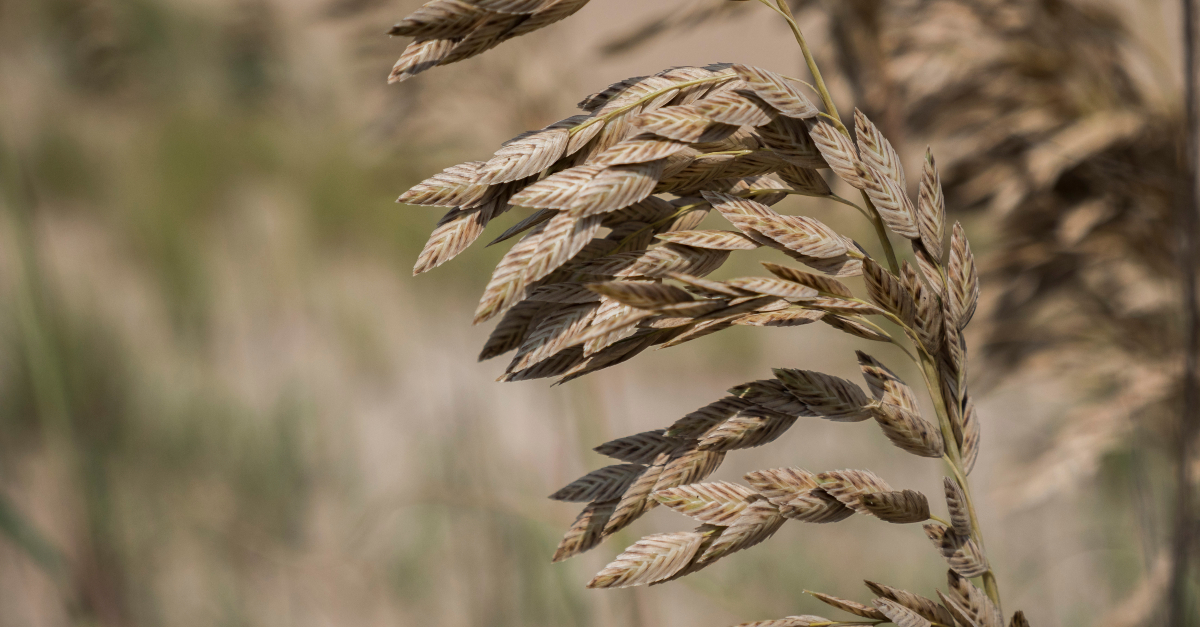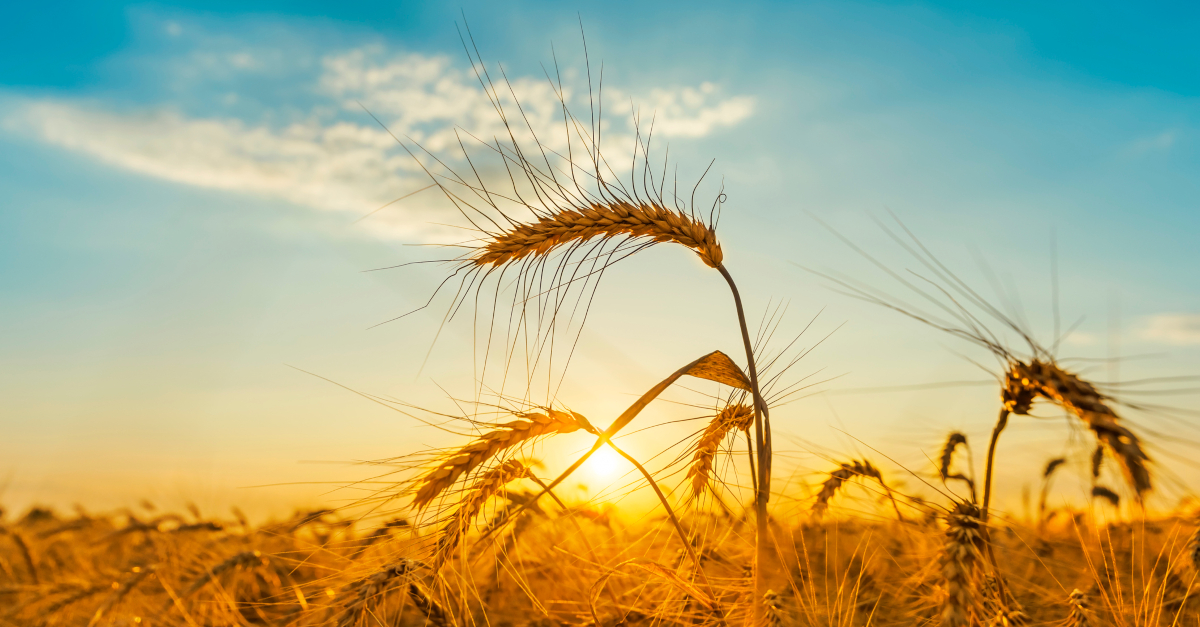What Does ‘Threshing Floor’ Mean for Christians Today?

His winnowing fork is in his hand, and he will clear his threshing floor, gathering his wheat into the barn and burning up the chaff with unquenchable fire. – Matthew 3:12
In our modern society, the simple things are often overlooked. We usually have our bread, fruits, vegetables, and other foods brought to us in big trucks. Rarely do we see the hard work of the farmers behind the scenes. These everyday workers are often forgotten.
The beauty of the Bible is that it can remind us to look beyond what is right in front of us. Today we are going to look at how God uses the idea of the threshing floor, chaff, and the winnowing fork to remind us of His judgment, redemption, and presence.
What Does ‘Threshing Floor’ Literally Mean?
The threshing floor was (and still is) a common enough place. Most farms had their own threshing floors. A few smaller farms would sometimes share a threshing floor.
For most of its history, the threshing floor was an outside space. The grain was spread out over a stone or hard-packed dirt. Then an animal (an ox, donkey, or horse) would walk across the grain to break the kernels. So the outside shell of the grain would then need to be separated from the good part of the grain.
This is where the farmer would use the natural wind to help separate the grain from what was called “chaff.” The word “chaff” means “rubbish.” So this was just the other parts of the grain that wouldn’t be used. The farmer would use what is called a “winnowing fork” to throw up the chaff and the grain that was mixed together. This was just a shovel that looked like a fork. The wind would blow away the chaff and the heavy grains would fall back onto the threshing floor. The process then was repeated until only the grain was left.
The grain could then be picked up and used to make bread. This process was so ordinary during biblical times that many didn’t even think twice about it. Even today there are indoor and outdoor threshing floors all over the world.
Symbolism in Biblical Examples of Threshing
Because this was a common practice, we see God use this analogy throughout Scripture. Specifically, in Psalm 1 believers are compared to the grain and unbelievers to chaff. It says “That person (who meditates on God’s word) is like a tree planted by streams of water, which yields its fruit in season and whose leaf does not wither—whatever they do prospers. Not so the wicked! They are like chaff that the wind blows away.”
Also in the prophets, especially Isaiah, the enemies of God and His people are called “chaff.” (Isaiah17:13, Isaiah 29:5, Isaiah 40:23, Isaiah 41:2)
Immediately the people reading Isaiah’s words would have known the prophet was speaking about the processing of threshing. Joel used the threshing floor to symbolize abundance. Joel 2:24 says that if the people repent, “The threshing floors will be filled with grain. The vats will overflow with new wine and olive oil.”
In Matthew 3:12 and Luke 3:17 Jesus talks about His ministry and compares those who believe His words and those who don’t. Sometimes it is hard for us to know who are true believers. Christ assures us God will separate the true believers and unbelievers with his “winnowing fork.” This is not to cause us to fear, but to assure us that God knows our hearts. If we are truly following Him, we will not be separated from Him.
God’s purpose for His people has always been that we be set apart. (Leviticus 19:2, John 17:15-18) So it is easy to see why God would use this imagery of threshing to show us the importance of being separate from the world. We cannot let the worldly thinking invade our mindsets. (Romans 12:1-2)

Three Ways Christ is Seen in the Threshing Floor
1. Christ As Our Judge
When they came to the threshing floor of Nakon, Uzzah reached out and took hold of the ark of God, because the oxen stumbled. The Lord’s anger burned against Uzzah because of his irreverent act; therefore God struck him down, and he died there beside the ark of God. – 2 Samuel 6:6-7
The ark of the covenant was used to represent God’s very presence. (Exodus 25:21-22) There were specific instructions on how to move the ark. (Exodus 4:1-16; Exodus 25:14-15) Unfortunately, when David goes to move the ark, he doesn’t follow these instructions. So on the threshing floor of a man named Nakon, another man, Uzzah, reaches out to keep the ox-cart from stumbling, and God strikes him dead.
It seems harsh, but if we understand that God judges sin, we will understand this.
David needed to be reminded of the severity of sinning and in 2 Samuel 7-8 we find David learns this lesson. Christ is our judge. As much as we like to sometimes forget this truth, the Bible is clear that Christ will judge our sins. The question is whether we have the righteousness to save us. (Philippians 3:9)
2. Christ as Our Redeemer
So she [Ruth] went down to the threshing floor and did everything her mother-in-law [Naomi] told her to do. When Boaz had finished eating and drinking and was in good spirits, he went over to lie down at the far end of the grain pile. Ruth approached quietly, uncovered his feet and lay down. – Ruth 3:6-7
One of the most popular threshing floor stories comes in the short four-chapter book of Ruth. A Moabitess named Ruth comes back to Bethlehem from the country of Moab (which were enemies with Israel) during the times of judges. She returns with her bitter mother-in-law Naomi. They are both widows, and God uses a threshing floor to provide redemption for them.
Ruth has been working the fields of a man named Boaz. She comes home to tell her mother-in-law about this man. Suddenly. Naomi remembers an old law (Leviticus 27:9-25) in which a relative can “redeem” someone’s property after he dies. Naomi’s husband is related to Boaz and therefore Boaz can redeem the fields of Naomi’s husband—and with the fields would come Naomi and Ruth.
Ruth agrees to meet and ask Boaz on the threshing floor that night. In this brief but poignant exchange, Boaz agrees (Ruth 3:9-10) to become what is called a “Kinsman Redeemer.” It is a perfect picture of Christ and His work for us.
In these verses we see Christ fulfill His duty as our redeemer: Luke 1:50, Luke 1:58, Luke 1:68, Luke 1:72, Luke 1:78; John 10:17-18; Romans 5:7-8; Ephesians 1:7; Colossians 1:4; Hebrews 2:11-12, Hebrews 2:17.
3. Christ As Our Temple
Because King David sins again God, we read in 1 Chronicles 21:14-15 how God punishes the people: “So the Lord sent a plague on Israel from that morning until the end of the time designated, and seventy thousand of the people from Dan to Beersheba died.”
Something happens when the plague reaches the threshing floor of someone named Ornan. When the angel stretched out his hand to destroy Jerusalem, the Lord relented concerning the disaster and said to the angel who was afflicting the people, “Enough! Withdraw your hand.” 1 Chronicles 21:15
Suddenly God stops. The angel of the Lord was at the threshing floor of Ornan the Jebusite and we see God step in and say “enough!” Why did God stop the judgment at the threshing floor of Ornan? We find out if we put together some pieces found in later Scripture that this is actually the place for Solomon’s temple!
Then Solomon began to build the temple of the Lord in Jerusalem on Mount Moriah, where the Lord had appeared to his father David. It was on the threshing floor of Ornan the Jebusite, the place provided by David. – 2 Chronicles 3:1
The temple was a place of worship for the people, but it was the permanent residence of God and His presence. God would meet with them there. And isn’t it wonderful to think that the sight of this most beautiful temple was built on an ordinary plot of ground called a threshing floor?

3 Aspects of God’s Character Seen in the Threshing Floor
God’s holiness: In the case of Uzzah, David, and the ark of the covenant we are reminded that God demands holiness. Although He longs for a relationship with us, He knows we can never have perfect communion with us until we are free from our sin.
The threshing floor reminds us we have chaff, or sin, in our lives that we need to get rid of.
So we need this reminder from 2 Samuel 6 to stop at the ordinary places in our life, much like Uzzah stopped on the threshing floor. We need to revaluate, and see if there is sin in our lives and let God clean us up.
God’s goodness to redeem: We could never be good enough on our own, but God in his rich mercy loved us so much to provide a way for us to be saved. He is our Redeemer. Ruth met her redeemer, Boaz, on the threshing floor. In the middle of a mess and debris, we can meet our Redeemer.
God doesn’t need us to clean up our lives for Him. He will pick us off of the floor, brush us off, and lead us out of the pit into a new life with Him!
God’s presence in our everyday moments: Often we think of God’s presence as something magical or majestic. Although He is Almighty and King of Heaven, we forget He is found in the small moments, too. So, maybe the threshing floor reminds us most of all that God loves us, redeems us, and longs to be with us in or ordinary moments.
What Does the Threshing Floor Mean for Me?
God doesn’t always reveal His ways to us, but in the idea of the threshing floor, we can be reminded that God rescues, redeems, and restores us on a daily basis. We might not always see His hand, but we can know He is working!
Photo Credit: ©Getty Images/Shaiith

This article is part of our larger resource library of popular Bible verse phrases and quotes. We want to provide easy to read articles that answer your questions about the meaning, origin, and history of specific verses within Scripture's context. It is our hope that these will help you better understand the meaning and purpose of God's Word in relation to your life today.
"Be Still and Know that I Am God"
"Pray Without Ceasing"
"Fearfully and Wonderfully Made"
"All Things Work Together for Good"
"Do Not Fear"
Originally published October 08, 2020.







